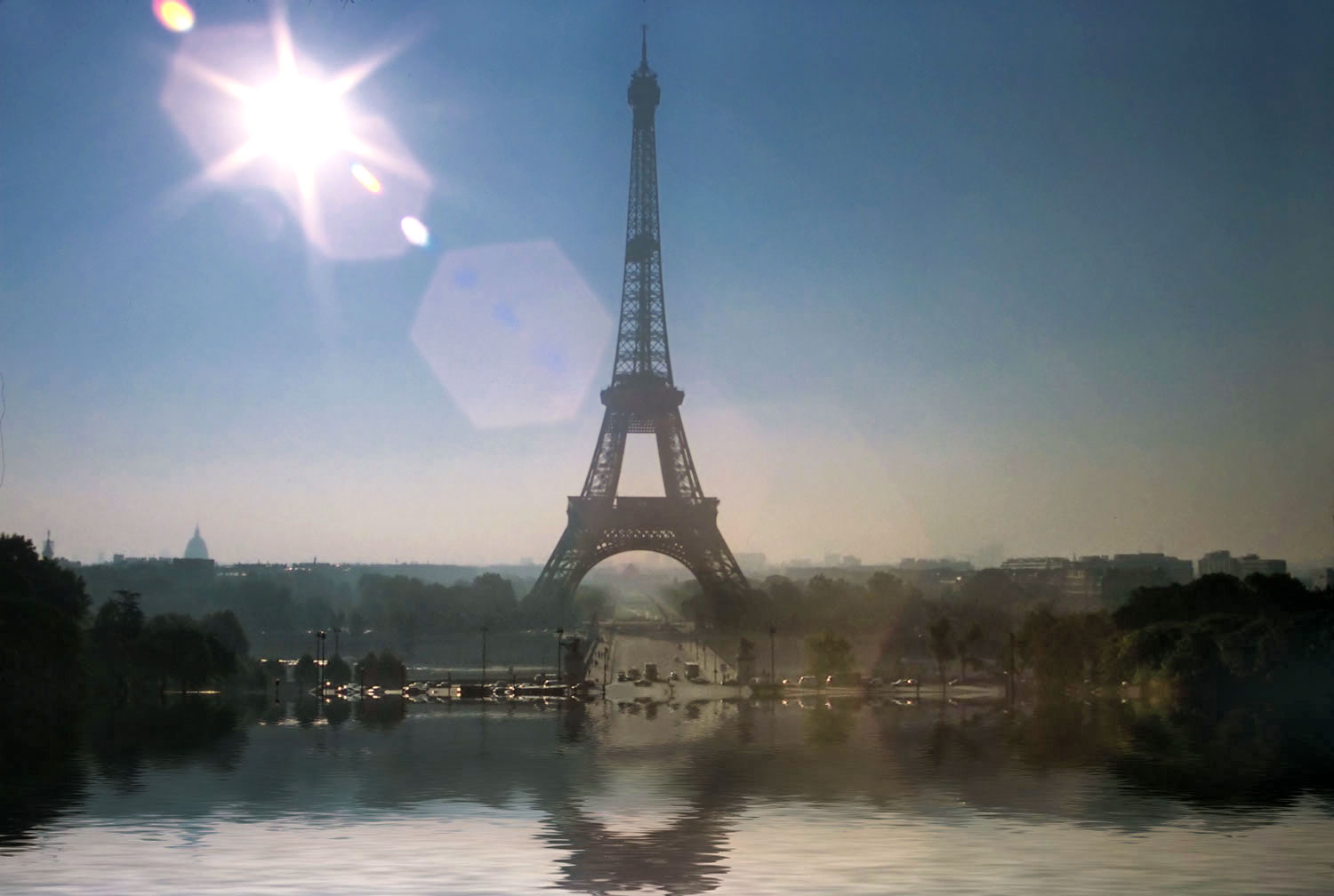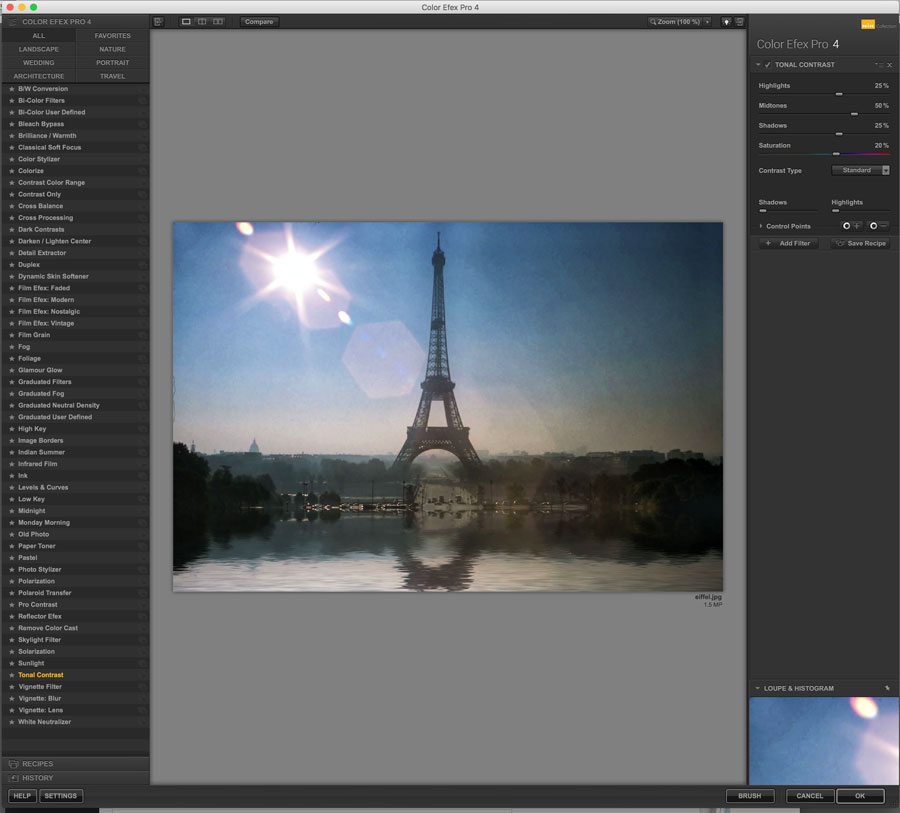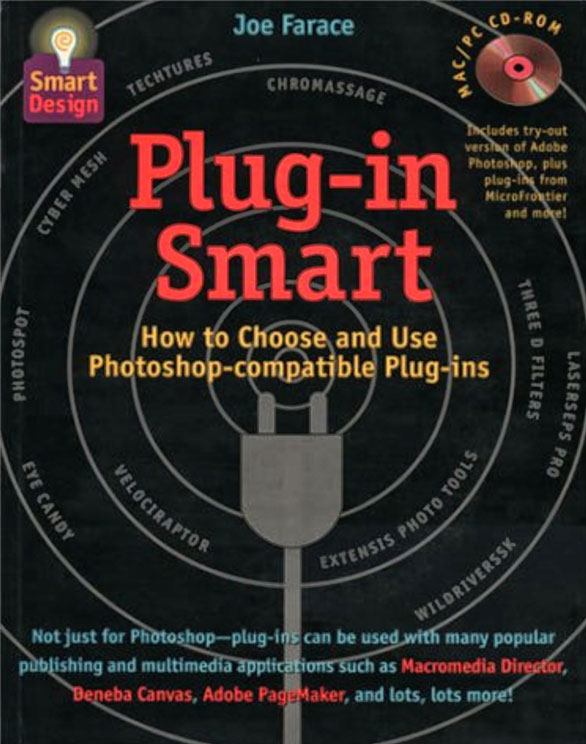Today’s Post by Joe Farace
“Once a year, go somewhere you have never been before.” Dalai Lama
Let’s talk about Photoshop-compatible Plug-ins,*:Although Adobe defined the standard, you don’t need Photoshop in order to use plug-ins. Compatible plug-ins can be used with other image editing programs but not all plug-ins work with Adobe’s Photoshop Elements and some plug-ins are not compatible with all image editing software.
It’s About Plug Ins
When working with any kind of plug-in it’s important to remember one of Farace’s Laws of digital imaging is that all special effects are subject dependent. An effect that may look great for portraits may not work all that well with landscape images, so you may need more than one plug-in. The below image was made using one of my favorite image effects plug-ins—Flood by Flaming Pear Software and I’ve used it for many types of subjects, including cars.
The original image of the Eiffel Tower in Paris (not Las Vegas) was shot on film during a time when I, like J.J. Abrams, was in love with the idea of the creative use of flare. You’ll be glad to learn that I’ve since gotten over this particular affliction. The camera used was a Nikon FM2 with Vivitar 24-48mm f/ 3.8 Series 1 lens a lens that I dearly loved at the time. Film was Kodak Ektachrome and the exposure was unrecorded. The film scan was mode using Kodak’s now-defunct Photo CD process and the file was opened using Lemke Software’s Graphic Converter that produces relatively good quality files from a Photo CD disc but the software is not without its quirks for users of older computers with older operating systems.

Where Does Lightroom Fit In?
 Some (key word) companies that make plug-ins have extended their technology to work with Adobe Lightroom but that program’s plug-in architecture is dissimilar to Photoshop’s. Adobe themselves differentiates between plug-ins and external editors and Lightroom has the ability to define as many external editors as well as presets that are compatible with it. According to Adobe “image processing plug-ins are best utilized through Photoshop”
Some (key word) companies that make plug-ins have extended their technology to work with Adobe Lightroom but that program’s plug-in architecture is dissimilar to Photoshop’s. Adobe themselves differentiates between plug-ins and external editors and Lightroom has the ability to define as many external editors as well as presets that are compatible with it. According to Adobe “image processing plug-ins are best utilized through Photoshop”
According to Journey Era, “A Lightroom preset is a configuration of settings, designed to achieve a certain look or style of your photo. You install the presets into your Lightroom and then when you click on a particular preset while in the develop module, the predetermined (preset) settings will apply to that photo.”
On the other hand, plug-ins, like the Tonal Contrast filter that’s part of Color Efex package, gives you control over the contrast (only) of highlights, midtones or shadows without affecting the rest of the image. You can use this filter for targeted control of a particular segment of an image’s tonal range. After applying the Flood plug-in, or example, I used Tonal Contrast to produce the finished photograph you see here.

Sometime around 2015, I wrote a book for Rockport Publishers called “Plug-in Smart, copies of which are available on Amazon for around seven bucks, For a long time it was the favorite book that I wrote, although that may be because Rockport was the best book publisher I ever worked with and the editing and publication processes, unlike almost all my other books was pleasant. For some reason, Amazon thinks the publishing date was “1709” and even I’m not that old.